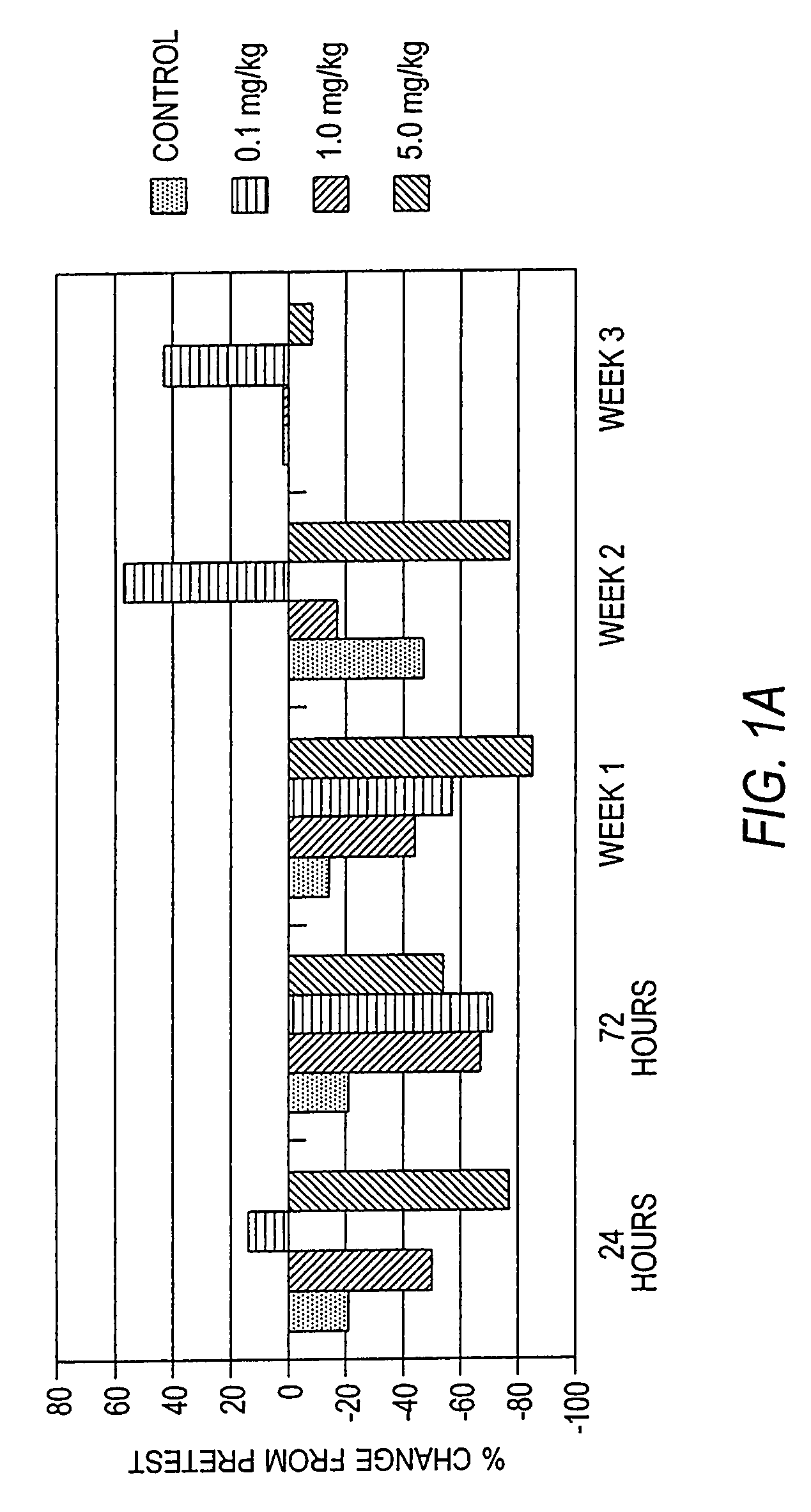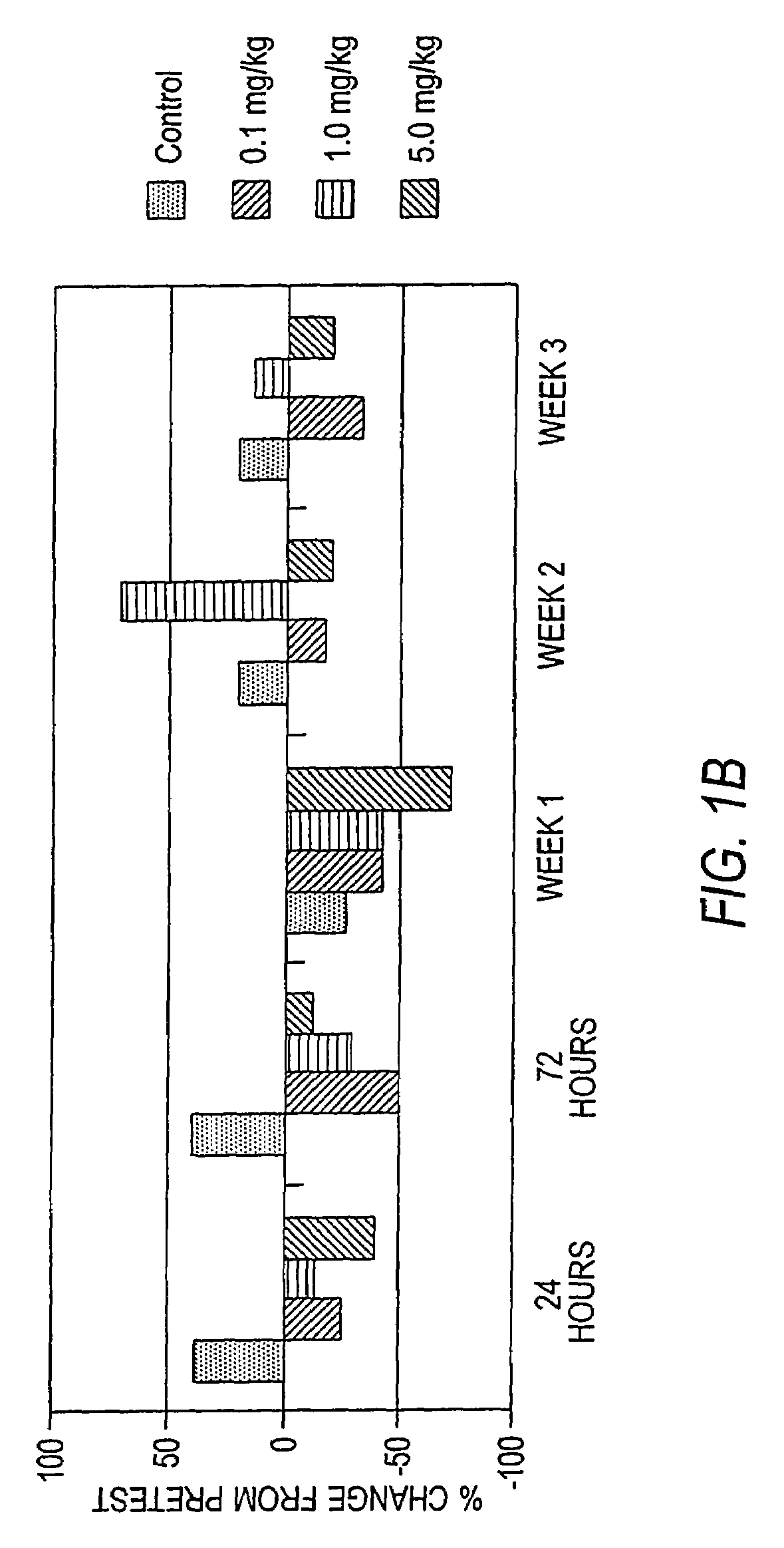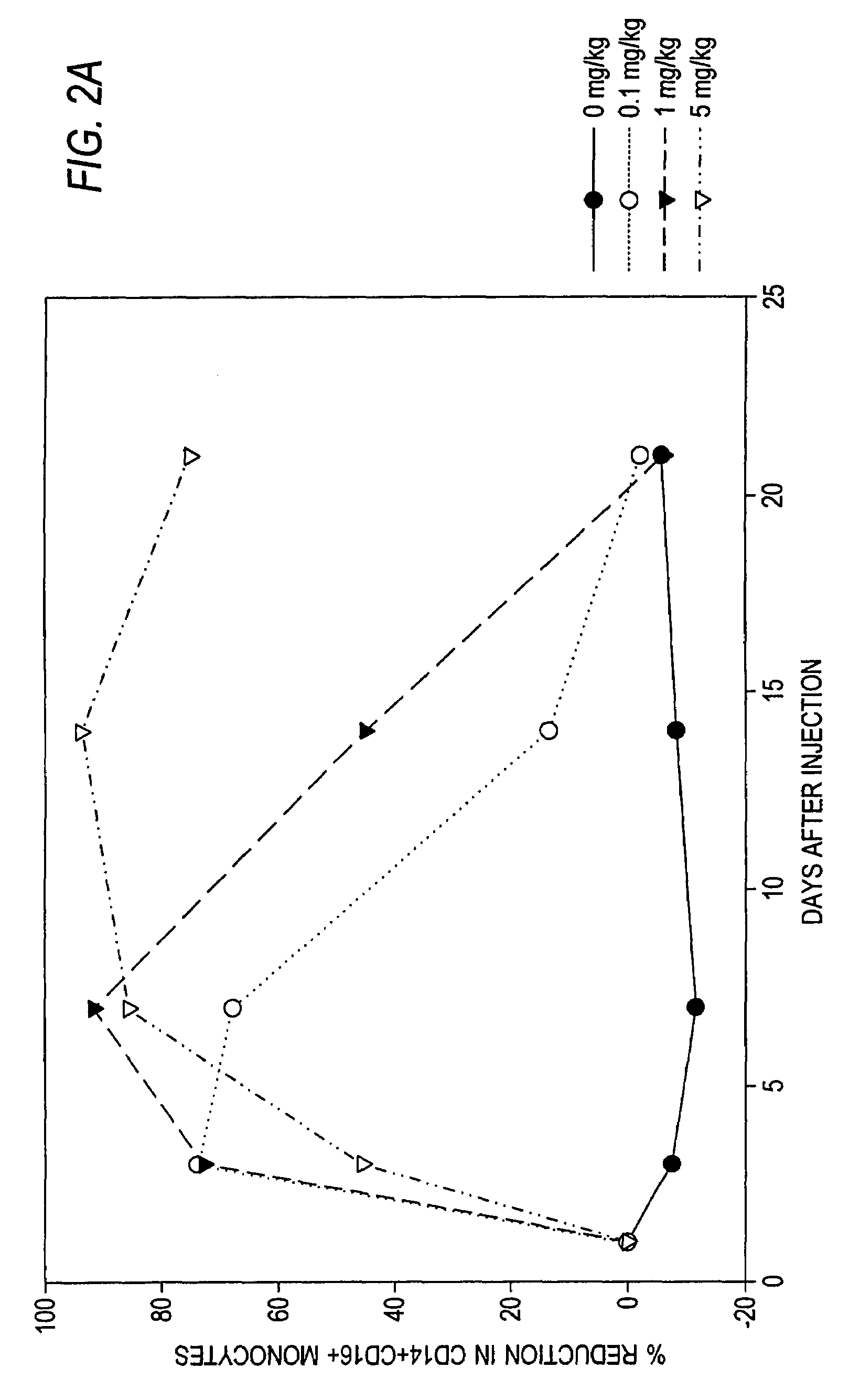Antibodies to M-CSF
a technology of mcsf and antibodies, applied in the field of antibodies to mcsf, can solve problems such as major unsolved problems, joint deformities, functional disabilities,
- Summary
- Abstract
- Description
- Claims
- Application Information
AI Technical Summary
Benefits of technology
Problems solved by technology
Method used
Image
Examples
example i
Generation of Cell Lines Producing Anti-M-CSF Antibody
[0273]Antibodies of the invention were prepared, selected, and assayed as follows:
Immunization and hybridoma generation
[0274]Eight to ten week old XENOMOUSE® transgenic mice that make human antibodies were immunized intraperitoneally or in their hind footpads with human M-CSF (10 μg / dose / mouse). This dose was repeated five to seven times over a three to eight week period. Four days before fusion, the mice were given a final injection of human M-CSF in PBS. The spleen and lymph node lymphocytes from immunized mice were fused with the non-secretory myeloma P3-X63-Ag8.653 cell line, and the fused cells were subjected to HAT selection as previously described (Galfre and Milstein, Methods Enzymol. 73:3-46, 1981). A panel of hybridomas all secreting M-CSF specific human IgG2 and IgG4 antibodies was recovered. Antibodies also were generated using XENOMAX® antibody selection technology as described in Babcook, J.S. et al., Proc. Nati. Ac...
example ii
Gene Utilization Analysis
[0276]DNA encoding the heavy and light chains of monoclonal antibodies 252, 88, 100, 3.8.3, 2.7.3,1,120.1, 9.14.4, 8.10.3 and 9.7.2 was cloned from the respective hybridoma cell lines and the DNA sequences were determined by methods known to one skilled in the art. Additionally, DNA from the hybridoma cell lines 9.14.4, 8.10.3 and 9.7.2 was mutated at specific framework regions in the variable domain and / or isotype-switched to obtain, for example, 9.14.41, 8.10.3F, and 9.7.21F, respectively. From nucleic acid sequence and predicted amino acid sequence of the antibodies, the identity of the gene usage for each antibody chain was determined (“VBASE”). Table 2 sets forth the gene utilization of selected antibodies in accordance with the invention:
[0277]
TABLE 2Heavy and Light Chain Gene UtilizationHeavy ChainKappa Light ChainCloneSEQ ID NO:VHDHJHSEQ ID NO:VκJκ2521, 23-117-276 3, 4O123 885, 63-7 6-134 7, 8O1231009, 103-231-264 11, 12L233.8.3143-117-274 16L532.7.3...
example iii
M-CSF Mouse Monocytic Cell Proliferation Assay
[0279]In vitro assays were conducted to measure M-CSF-dependent mouse monocytic cell proliferation in the presence of anti-M-CSF antibodies to determine the degree of inhibition by anti-M-CSF antibodies.
[0280]Mouse monocytic cells, M-NFS-60 cells, from American Type Culture Collection (ATCC) (Manassas, Va.), were obtained and maintained in RPMI-1640 medium containing 2 mM L-glutamine (ATCC), 10% heat inactivated fetal bovine serum (FBS) (Invitrogen, Carlsbad, Calif.), 0.05 mM 2-mercaptoethanol (Sigma, St. Louis Mo.) (assay medium), with 15 ng / ml human M-CSF. M-NSF-60 cells were split to 5×104 for next day use or to 2.5×104 for use in 2 days. Prior to use in the assay, the cells were washed three times with RPMI-1640, counted and the volume adjusted with assay medium to yield 2×105 cells / ml. All conditions were conducted in triplicate in 96-well treated tissue culture plates (Corning, Corning, N.Y.). To each well 50 μl of the washed cells...
PUM
| Property | Measurement | Unit |
|---|---|---|
| W/W | aaaaa | aaaaa |
| W/W | aaaaa | aaaaa |
| W/W | aaaaa | aaaaa |
Abstract
Description
Claims
Application Information
 Login to View More
Login to View More - R&D
- Intellectual Property
- Life Sciences
- Materials
- Tech Scout
- Unparalleled Data Quality
- Higher Quality Content
- 60% Fewer Hallucinations
Browse by: Latest US Patents, China's latest patents, Technical Efficacy Thesaurus, Application Domain, Technology Topic, Popular Technical Reports.
© 2025 PatSnap. All rights reserved.Legal|Privacy policy|Modern Slavery Act Transparency Statement|Sitemap|About US| Contact US: help@patsnap.com



